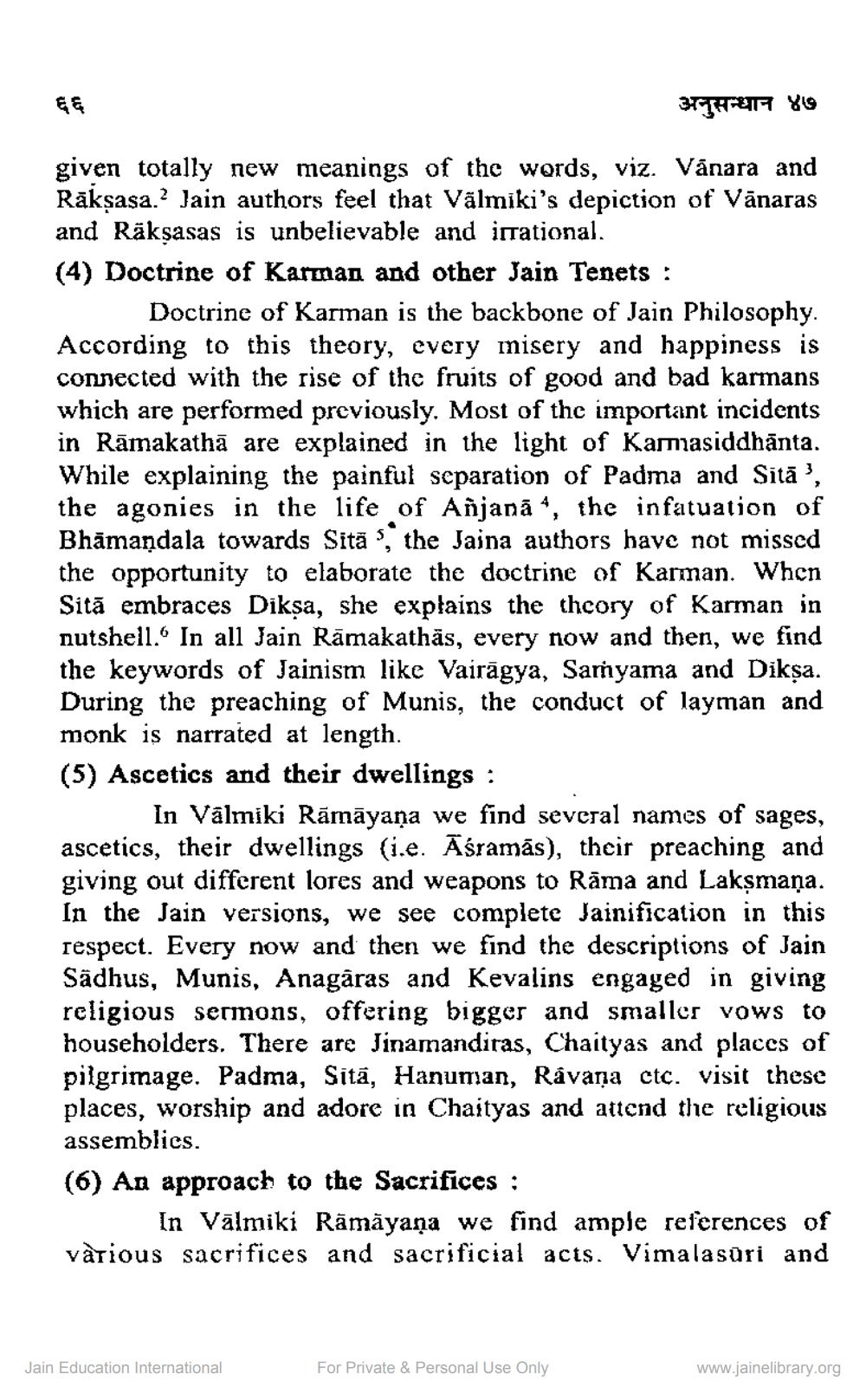Book Title: Jain Version of Ramayana Author(s): Nalini Joshi Publisher: ZZ_Anusandhan View full book textPage 4
________________ ६६ अनुसन्धान ४७ given totally new meanings of the words, viz. Vanara and Rākṣasa. Jain authors feel that Välmiki's depiction of Vanaras and Räkṣasas is unbelievable and irrational. (4) Doctrine of Karman and other Jain Tenets : Doctrine of Karman is the backbone of Jain Philosophy. According to this theory, every misery and happiness is connected with the rise of the fruits of good and bad karmans which are performed previously. Most of the important incidents in Ramakatha are explained in the light of Karmasiddhānta. While explaining the painful separation of Padma and Sitā3, the agonies in the life of Anjana, the infatuation of Bhāmaṇdala towards Sita, the Jaina authors have not missed the opportunity to elaborate the doctrine of Karman. When Sitā embraces Dikṣa, she explains the theory of Karman in nutshell. In all Jain Ramakathās, every now and then, we find the keywords of Jainism like Vairagya, Samyama and Dikṣa. During the preaching of Munis, the conduct of layman and monk is narrated at length. (5) Ascetics and their dwellings : In Valmiki Rāmāyaṇa we find several names of sages, ascetics, their dwellings (i.e. Asramās), their preaching and giving out different lores and weapons to Rama and Lakṣmaṇa. In the Jain versions, we see complete Jainification in this respect. Every now and then we find the descriptions of Jain Sadhus, Munis, Anagaras and Kevalins engaged in giving religious sermons, offering bigger and smaller vows to householders. There are Jinamandiras, Chaityas and places of pilgrimage. Padma, Sita, Hanuman, Ravaṇa etc. visit these places, worship and adore in Chaityas and attend the religious assemblies. (6) An approach to the Sacrifices : In Valmiki Rāmāyaṇa we find ample references of various sacrifices and sacrificial acts. Vimalasuri and Jain Education International For Private & Personal Use Only www.jainelibrary.orgPage Navigation
1 2 3 4 5 6 7 8 9 10 11 12 13
